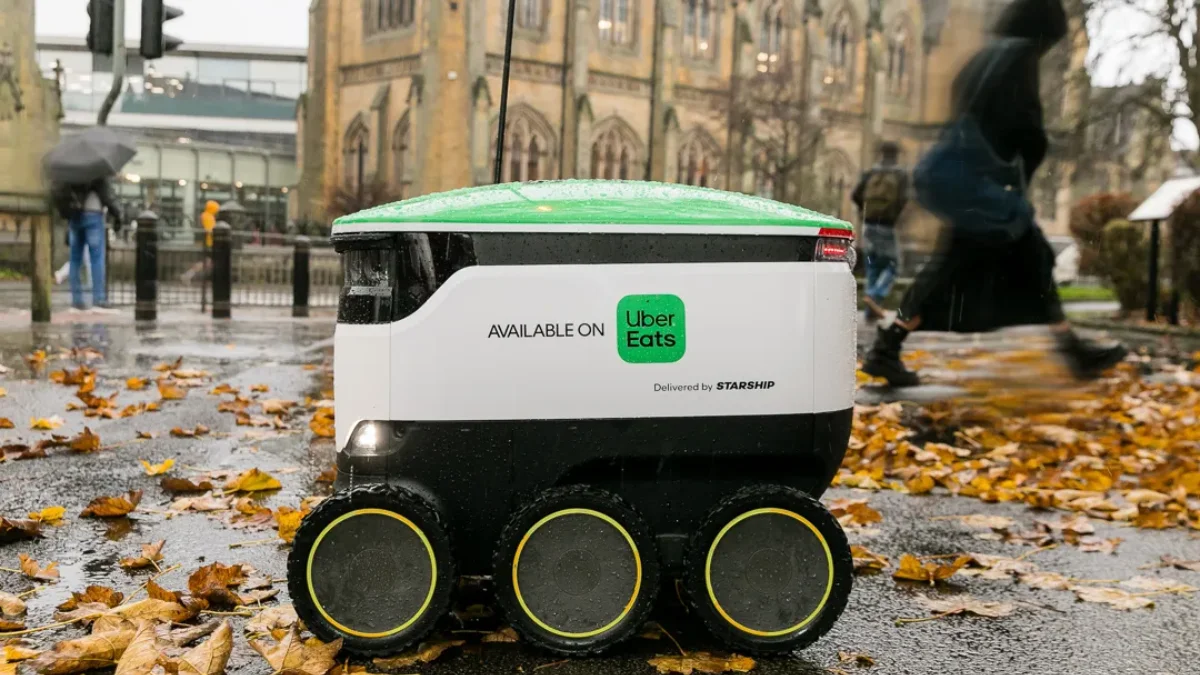Necessary Always Active
Necessary cookies are required to enable the basic features of this site, such as providing secure log-in or adjusting your consent preferences. These cookies do not store any personally identifiable data.
|
||||||
|
||||||
|
||||||
|

In Focus
A new collaboration between Uber Eats and Starship Technologies is set to introduce autonomous sidewalk delivery to parts of the United Kingdom later this year. According to TechCrunch, the companies will begin trials with Starship’s autonomous sidewalk fleet in Leeds and Sheffield starting December 2025, marking a new phase in the evolution of autonomous last-mile logistics.
The new partnership will allow Uber Eats to use Starship’s sidewalk robots across select merchant locations before expanding into wider service zones. The companies confirmed that operations will begin in December in the Leeds and Sheffield regions, with both markets chosen for their pedestrian-friendly layouts and delivery density.
Uber stated that the program will be extended to additional European markets in 2026 and to the United States in 2027, reflecting a staggered and geographically diverse adoption plan aligned with regulatory progress. This year in July, Uber Eats announced a new feature that lets restaurants and stores talk directly with customers about their orders.
Starship brings an established operational footprint to the partnership. The company reports having nearly 3,000 active Starship six-wheeled delivery robot units deployed across more than 270 global locations.
These sidewalk robots typically complete deliveries in under 30 minutes and travel distances of no more than two miles, making them suitable for low-radius, high-frequency delivery environments.
The collaboration highlights Uber Eats’ continued interest in robotics after previously working with Serve Robotics and Avride. Starship becomes the latest addition to that ecosystem, reinforcing Uber’s multi-vendor approach to last-mile delivery robots Uber deployments.
Industry Momentum and the Growing Role of Autonomous Sidewalk Delivery
The integration of Starship’s robots builds on existing automation efforts within Uber Eats’ logistics operations. This underscores the company’s strategic interest in developing diversified autonomous delivery partnerships that align with broader industry momentum.
Starship’s operational model relies on a combination of onboard sensors, computer vision systems and remote monitoring to navigate sidewalks and urban footpaths. The robots are engineered to operate in low-speed environments, enhancing safety and regulatory acceptance within pedestrian zones.
Their small cargo compartments make them suitable for single-order food deliveries, aligning with demand patterns within densely populated urban neighborhoods.
The initiative reflects wider adoption patterns in the autonomous delivery ecosystem. Uber Eats has used Serve Robotics’ sidewalk robots in several U.S. cities and began using Avride’s units earlier in 2025. In other news, Uber’s holiday quarter forecast remained cautious despite solid demand for its ride-hailing and food delivery services fueled by growing use of its membership program.
Important observations from this development include:
The partnership between Uber Eats and Starship signals meaningful movement in the advancement of autonomous delivery networks. The decision to introduce the service in the U.K. demonstrates confidence in the region’s regulatory climate and infrastructure readiness. For businesses operating within logistics, food delivery and retail, the collaboration highlights a continued shift toward automation that supports scalable, cost-efficient last-mile services.
As this deployment expands into Europe and the United States, it may influence future investment decisions, operational road maps and competitive positioning among last-mile technology providers. Starship’s established delivery record, combined with Uber Eats’ extensive merchant network, positions the partnership as a potential accelerant for sidewalk-based autonomous logistics.